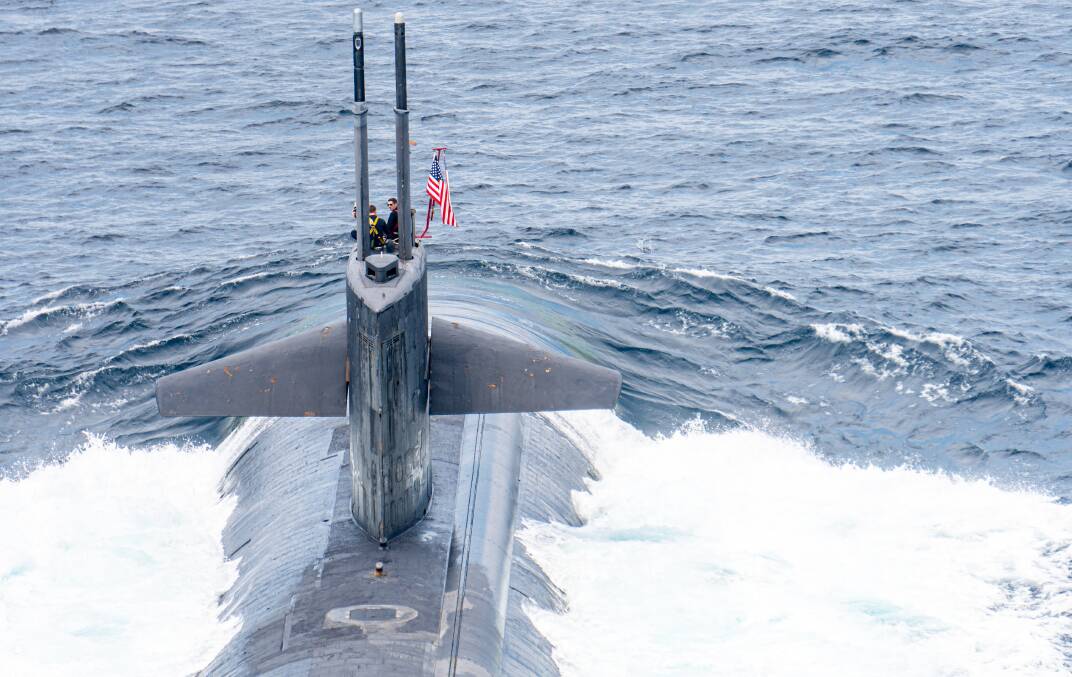
It seems unlikely that Australia will ever have a submarine named HMAS Keating, or even one named AS Keating, should Australia become a republic before a first nuclear submarine splashes out of Adelaide's shipyards sometime in the 2040s.
The announcement by Prime Minister Albanese that Australia will spend $368 billion on nuclear submarines continues to be headline news.
The Australian navy will buy three, perhaps five, Virginia class submarines from the US during the 2030s.
Then, in partnership with the UK, using US nuclear technology, Australia will start building up to eight nuclear submarines a decade later.
The announcement of the AUKUS deal has generated controversy. Former prime minister Paul Keating has led a growing chorus of doubters.
Is the purchase the best use of the defence budget? Aren't there more important things needing taxpayer dollars? Are we handing sovereignty over our military to US politicians and generals?
Should Australian ports host nuclear powered vessels? Does the nation have the capability to manage the project, the acquisitions, the construction, the operations?
A further issue, though less prominent to date, is where will the submarines be constructed and housed? Who will be the economic winners?
What region will get the jobs, what firms will be nurtured by supply chain and maintenance contracts, where will a new generation of navy submariners call home?
South Australia was immediately named as the place where the submarines will be built, apparently an obvious choice.
That nowhere else in Australia seems upset by the Adelaide decision shows how much shipbuilding capacity in Australia has declined since the 1980s and 1990s.
However, a base for the long-term operation of the submarines has not been decided on, apparently.
Announcing the submarines deal in principle in March last year, then-prime minister Scott Morrison said the Australian navy had shortlisted Brisbane, Newcastle and Port Kembla as front runners.
Following the Albanese announcement, Port Kembla is named consistently in the press as the preferred home port.
Disappointingly, there doesn't appear to be a public report saying why.
The absence of Newcastle clamour to host the base long term is perhaps understandable.
Like Port Kembla, there would be vigorous opposition in Newcastle from unionists and the community to a nuclear presence in the local harbour.
Also in play is the fact that China Merchants holds 50 per cent of the lease over the Port of Newcastle - its navigation channels, ports and portside lands - until 2112.
It's headshaking that a Chinese state enterprise might supervise the day-to-day movements of an Australian submarine fleet seemingly assembled to keep the Chinese at bay.
So what is the geography of nuclear submarines for our AUKUS partners?
In the UK, submarines are manufactured at Barrow-in-Furness, a longstanding submarine construction town on the northwest coast of England.
The UK fleet operates out of Faslane in Scotland, again a longstanding British naval facility.
In the US, submarine construction is shared between facilities at Groton in Connecticut and Newport News in Virginia, both Atlantic coast ports.
Reflecting its massive naval presence throughout the world, though, the US spreads it submarine fleet across nine bases in the US and elsewhere.
Key to the long-term economic viability of places that host submarine shipyards and bases is certainty: continuity of orders, the nurturing of dedicated enterprises and supply chains, and the maintenance of a skilled workforce, on land and sea.
These are costly.
Currently, the US adds two new Virginia class submarines to its fleet each year, one each from Groton and Newport News.
In the UK, Barrow-in-Furness delivers on average one submarine every four years.
New subs then start a long expensive life, crewed and serviced from established submarine bases.
A US congressional study found a typical Virginia class submarine - the current model - costs the US taxpayer the equivalent of $A44 billion across its life.
Sure, the local economies serving shipyards and naval bases enjoy economic benefits as a consequence. But only because mountain-sized piles of taxpayer funding are trucked in year-in, year-out.
Putting aside the danger a nuclear presence would bring to an Australian city, be it Brisbane, Newcastle or Wollongong, hosting a submarine base with a small fleet seems like a very precarious venture.
Phillip O'Neill is professor of economic geography at Western Sydney University.
WHAT DO YOU THINK? Join the discussion in the comment section below.
Find out how to register or become a subscriber here.







